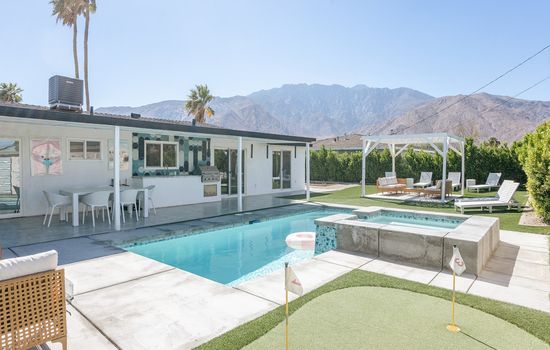Joshua Tree Visitor Center: 7:30 AM – 5:00 PM daily. Cottonwood Visitor Center: 8:30 AM – 4:00 PM daily. Black Rock Nature Center: 8:00 AM – 11:00 AM, 12:00 PM – 4:00 PM daily.
At Joshua Tree National Park, the entrance fees are as follows: $30 for a non-commercial vehicle (valid for 7 days), $25 for a motorcycle (7 days), and $15 per person on foot or bicycle. An annual park pass is $55, and an America the Beautiful annual pass is $80. Seniors, military, and those with a permanent disability may qualify for discounted or free passes.
Drive from major cities like LA or San Diego; fly into Palm Springs (PSP) or LAX and rent a car; limited public transport to nearby towns, or join a guided tour from cities like Palm Springs.
Parking lots are available at various sites like Hidden Valley, Ryan Mountain, and near visitor centers. No overflow parking; extra vehicles must park outside the park. RVs can use fill stations at Black Rock and Cottonwood campgrounds. No overnight parking in lots, except at designated campsites. Fees apply for entrance, not for parking itself. Limited space for larger RVs. Motorcycles use same lots as cars.
Accessibility & permits
Emergency
- Cell service availability:None
Information not accurate?
Help us improve by making a suggestion.
Joshua Tree National Park spans over 1,200 square miles of otherworldly desert terrain where Mojave and Colorado Desert ecosystems meet. Iconic Joshua trees, sculptural granite formations, and vibrant oases define the landscape. The park is famed for stargazing, rock climbing, hiking, and unique desert biodiversity.
- Area (mi²)
- 1235
- Annual visitors
- 2 991 874
- Established year
- 1936
Top 3 Facts about Joshua Tree National Park
About 85% of the park’s 792,623 acres is designated wilderness, protecting a diverse ecosystem with elevations ranging from 900 feet to over 5,000 feet above sea level. This wilderness area is home to 57 species of mammal, 46 species of reptile, and 250 bird species.
The park’s iconic granite rock formations have been sculpted over millions of years by erosion, offering some of the world’s best climbing and bouldering opportunities.
Despite its harsh desert environment, Joshua Tree is home to diverse wildlife like bighorn sheep, coyotes, rattlesnakes, and hundreds of plant species including cacti and creosote.
Family programs
- Junior Ranger
- Virtual Junior Activities
- Night Sky & Astronomy
- Arts & Crafts
Travel Tips
Plan Ahead
Research attractions and check alerts before your trip. Consider reserving campsites or lodging early in peak seasons.
Pack Appropriately
Bring sunscreen, layers, sturdy shoes, and especially water—at least one gallon per person per day.
Respect Wildlife
Stay alert and give wildlife space. Don’t feed or touch animals. Be cautious of snakes and tortoises on trails.
Stay Informed
Weather can change rapidly in the desert. Check conditions, especially during monsoon season or high heat advisories.
Seasons
Spring is one of the best times to visit Joshua Tree National Park. From March to May, the desert blooms with wildflowers, and temperatures in the 70s to 80s °F (20s to 30s °C) are ideal for hiking, rock climbing, and photography. Wildlife becomes more visible, and clear skies make for excellent stargazing.
Summer in Joshua Tree National Park can be extremely hot, with temps over 100°F (38°C). Early morning and evening outings are best. Visitors should carry ample water, wear sun protection, and expect fewer crowds during this season.
From September to November, fall brings cooler weather and starts the park’s busy season. With mild days and clear nights, it’s ideal for hiking and stargazing. Crowds increase, but the vast desert offers solitude if you venture off the beaten path.
Winter is a popular time to visit, with daytime highs in the 60s–70s°F (15–25°C). Nights are cool, but the clear skies make for exceptional stargazing. Ideal for hiking, climbing, and exploring the desert without the summer heat.
Information not accurate?
Help us improve by making a suggestion.
Where to stay
Frequently Asked Questions
Ready to dive into what Joshua Tree National Park has to offer? Let’s tackle some of the burning questions you might have as you plan your visit!
-
The closest city to Joshua Tree is Yucca Valley, California, which is about 8 miles away and a 14-minute drive. Twentynine Palms is another nearby city, approximately 15 miles away and a 17-minute drive. Palm Springs, a larger city, is about 50 minutes away.
-
The Discovery Trail is the best hike for kids, designed by local students in 2012 and built by the Youth Conservation Corps in 2013. This 0.7-mile loop has only 50 feet of elevation gain and features 10 points of interest, making it a fun and educational hike. It is located across from Skull Rock on Park Boulevard.
-
Pets are not allowed on hiking trails, except for the paved Oasis of Mara Trail. They are also not permitted in the backcountry or park buildings. However, pets can walk on unpaved roads and be in picnic areas and campgrounds.
-
You can camp overnight in your RV, but at Hidden Valley and White Tank Campgrounds, the combined length of your RV and trailer cannot exceed 25 feet. Other campgrounds have different length restrictions. Reservations are recommended, especially during busy seasons from October to May.
-
To make the most of 24 hours, start early with the Hidden Valley Nature Trail from 8:15-9:15 am to see plenty of Joshua trees. Next, take the Keys Ranch Tour from 9:30-11 am to learn about the park’s history. Visit Barker Dam from 11 am-12 pm, and then hike the Lost Horse Mine Trail from 12:15-3 pm. End the day with a visit to the Cholla Cactus Garden and the Oasis of Mara, which offers a historical loop starting at the Oasis Visitor Center.













